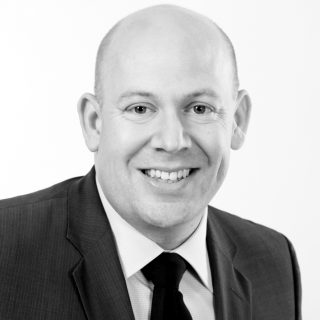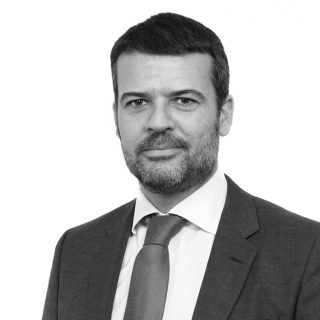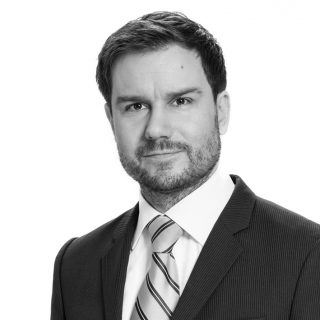Further to our “Internet of Things I: power and light” event on the first of March , here’s a round-up of the key messages from our speakers.
On 1 March 2016 Osborne Clarke held the first in a 3-part series of events focussed on the Internet of Things, aka ‘IoT’. The first session focussed on ‘light and power’ – taking a step back from the functionality of IoT devices to look at how the IoT is powered and connected – and importantly how the technology to enable that power and connectivity is protected.
We had a range of speakers from former science minister, Lord Drayson and Industrial Fellow at the Cambridge University Engineering Design Centre, Dr.Anna Mieczakowski to triple-jurisdiction qualified lawyer Nina Cummins and Client Choice award winner, Ben Goodger.
Lord Paul Drayson – Chairman and CEO, Drayson Technologies – Can we economically power the 20 billion IoT devices predicted by 2020?
Drayson Technologies is developing technology to ‘harvest’ or ‘recycle’ energy. Whilst this is not a new phenomenon, solar panels have existed for a number of years now, the technology developed by Drayson is taking harvesting a step further and is recycling radio frequency, i.e. carrier wave transmissions, through its ‘Freevolt’ technology. Lord Drayson described the technology as ‘a solar panel that doesn’t need to see the sun’.
The Freevolt technology is harnessing the waves from the base stations that provide connectivity to IoT devices, to also power them whilst extending battery life, reducing lifetime costs and increasing the user experience. It also comes with an environmental benefit that it has the opportunity to reduce the need for lithium mining and battery land fill.
Drayson has developed a device and application to showcase the potential of this Freevolt technology in the form of ‘CleanSpace’ – an air quality monitoring device providing crown-sourced air pollution data. Cleanspace is driving awareness of an issue which is gaining public awareness and it hopes that its device will help change further awareness which will lead to change. Change in public behaviour but potentially also public policy.
Lord Drayson’s left us with the comment that the key to successful IoT is scale; scale needs to be driven to realise the benefits that IoT devices can achieve, particularly in big data analytics. This new technology is enabling this scale, creating efficiencies and, as a result, it is hoped it will also drive mass adoption.
Dr Anna Mieczakowski – Head of Operations, Cambridge Nanosystems – The potential of graphene in powering our world
Graphene has been heralded by many as the wonder material of the 21st century and Anna took us through its history up the present where we are seeing its early applications; such as in the tennis rackets used by Andy Murray and Novak Djokovic to high value electronics in China.
One of the biggest challenges to the adoption of graphene is the lack of industry standardisation in its production; this is consequently making it more challenges for applications to be developed.
Whilst Anna focusses on its use in power, as the topic of the mornings event, the applications for graphene are, it seems, limitless for example it is being in the automotive industry, in aerospace and sensors and it is predicted to replace petrol in cars and platinum in fuel cells in the future. However the way graphene is transforming the performance of lithium ion batteries and fuel cells could revolutionise how IoT devices are powered.
Graphene has the potential to increase the speed of a single battery charge, increase performance of a battery by up to 20% and enable a high number of charge cycles. This isn’t a technology of the future either but is already in use; in Japan electric trams are able to charge for 30 seconds whilst stopped in a station which propels them 4km on this single short charge – a fairly impressive statistic.
Nina Cummins – Associate Director at Osborne Clarke LLP – Spectrum: Where’s the next big wave coming from?
The connectivity of IoT devices inevitably relies on the use of radio waves – i.e. the use of spectrum. Nina explained how spectrum is vital to IoT devices and the regulatory challenges that are faced both in the UK and across Europe. It’s something which is not just of interest to the telcos that provide connectivity, but also affects the device manufacturers. Manufacturers should be thinking carefully about spectrum constraints and engaging with their proposed connectivity providers early so as to ensure that when devices are launched, they can speak to one another.
Spectrum is a scarce resource, owned and managed in the UK by Ofcom. For IoT devices to date, these have tended to fall into the deregulated part of the spectrum. However, the need for resilience and reliability over superfast speed could see this all change with more access to the regulated part of the spectrum being needed. The fact that spectrum is scarce is but one challenge facing the growing IoT device market. The issues of potential interference (i.e. the need to avoid device and band interference) and resilience are factors to also consider in managing what bandwidth to use for connecting IoT devices.
Questions that national regulators like Ofcom are having to consider are whether to free-up/liberalise more spectrum (Ofcom is intending several further spectrum awards/auctions during the next year) for IoT devices, and how these devices will be affected by the recent new European net neutrality laws that come into effect at the end of April. At a pan-European level, national regulators are having to consider how to take a harmonised approach across Europe in keeping with the digital single market initiatives.
Nina highlighted some of the new options the market is testing such as harnessing the visible light spectrum i.e. Li-Fi, and the use of ‘whitespaces’, the buffer between broadcast frequencies which is currently sitting idle. Meerkat lovers may have already taken advantage of this emerging white-space technology by watching the trial set up to stream 24 hour footage from ZSL London Zoo.
Ben Goodger – Partner at Osborne Clarke LLP – IP issues: handshake or arm-wrestle?
Ben closed out the information-packed session with some thoughts on the standardisation, or lack thereof, of hardware and software in the IoT market. Ben used the analogy of the multitude of non-standard electrical plug types around the world, which if we are not careful could be what the IoT patent and software-interoperability market will look like in years to come.
There are standards organisations, such as ETSI, whose role it is to drive standards and agree what are Standard-Essential Patents (SEPs) which must be licensed on fair, reasonable and non-discriminatory terms (FRAND). Of course the question of what is FRAND is not necessarily an easy question and Europe has seen high-profile litigation which has now resulted in a detailed process for how FRAND should be determined.
Standardisation and software interoperability are also part of the European Commission’s digital single market agenda and there is a rolling plan for ICT standardisation due in April 2016 and following a consultation responses highlighted that IoT was the second biggest priority of businesses in the digital single market.
The next instalment of this 3-part series looking at the Internet of Things will focus on Connected Homes and will be held on 5 April 2016. Register an interest here.
Tags: General





